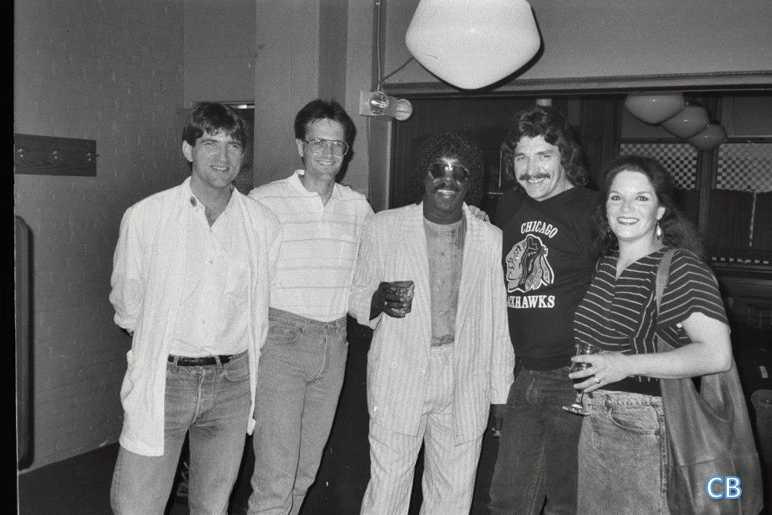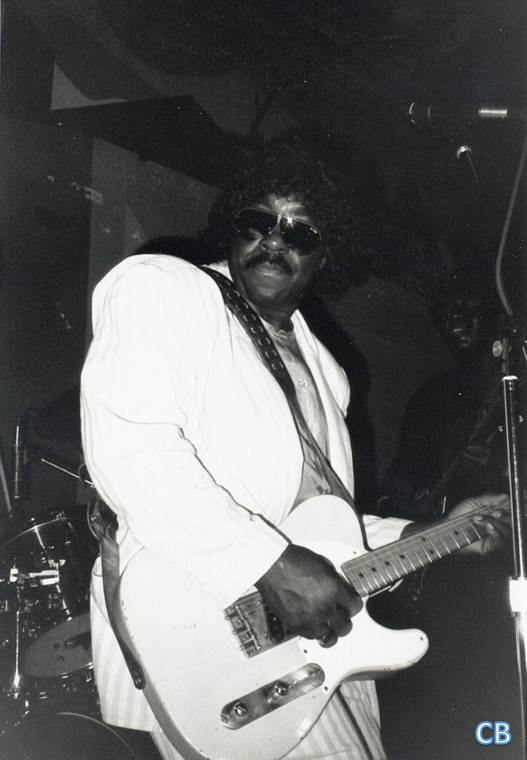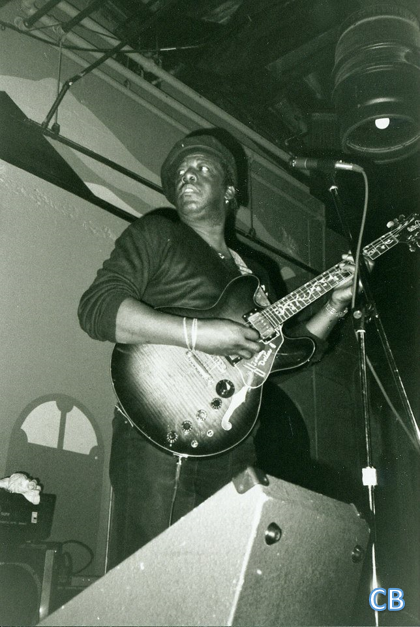Phil Guy: Tough Chicago Bluesman On His Own Merits
I have to get this out of the way at the start. While many blues writers and scholars try to minimize in their efforts the brotherly connection between Phil Guy and Buddy Guy in an attempt to allow Phil’s merits stand on their own two feet, I instead will address the obvious issues directly. Buddy, at 85 years of age, remains one of the last of the titans of Chicago blues still alive (and in my estimation, only with blues harmonica giant Billy Boy Arnold), a bluesman whose profound influence is Immense. Buddy continues to keep a rigorous touring schedule even to this day, and still can be found each January in Chicago holding court in his club, Buddy Guy’s Legends, during his month-long residency. Buddy’s vast guitar dexterities, stage charisma, and vocal style have hugely been impactful on legions of guitar players, including Eric Clapton, Jimi Hendrix, Stevie Ray Vaughan, Jimi Hendrix, John Mayer, Jeff Beck, along with just about every other guitarist of any merit, blues or otherwise. Buddy’s unpredictable, off-the-cuff performing style, steeped in the showmanship he experienced at the feet of legendary blues artist Guitar Slim, forever shaped his insistent form of stage drama, one that his fans have embraced from the earliest points of his blues career.
So then, Phil, Buddy’s younger brother, was obligated to step-out from the acclaim heaped upon Buddy and forge his own style and blues inclinations. Many would shy away from such an undertaking, but Phil was able to chisel his way into the awareness of the blues world despite Buddy’s looming presence, and over a long career, became a highly-respected bluesman based upon on his own capabilities, earning him a rightful position as a top-tier blues artist.
Interestingly, Phil did not begin his blues career playing guitar. Growing-up in Louisiana, he first hit the stage playing harmonica in the band of Raful Neal, the Baton Rouge blues singer (and fine harmonica player, as well). But at age 29, Phil decided to leave Louisiana and trek to Chicago to join Buddy’s band during those influential years when Buddy’s guitar playing was starting to cast a wide net of inspiration among players of both blues and rock-n-roll. Together, Phil and Buddy toured all across America and Europe. They were also afforded another high-profile opportunity when they joined the Festival Express Tour, a booking that took them throughout areas in Canada, on a sojourn that included such renowned rock-n-roll artists as The Grateful Dead, The Band, and Janis Joplin. Also, during this period of the 1970s, Phil had the valuable chances to work with Big Mama Thornton, Memphis Slim, Son Seals, John Lee Hooker, Koko Taylor, and Albert Collins. As can be imagined, Phil’s experience working with these diverse blues artists yielded shreds of influence that eventually shaped his unique blues vision.
When Buddy teamed with Chicago bluesman Junior Wells, Phil, too, was a key component in the band, and the extensive touring the group undertook offered even more important exposure and experience for Phil.
In the 1980s and 1990s, Phil recorded numerous albums, either solely under his name, or in partnership with other bluesmen, including Buddy, George “Mojo” Buford, Lurrie Bell, The Wentus Blues Band, Mississippi Fred McDowell, The Chicago Machine (his band), and a host of other blues luminaries. Phil released eight albums on the JSP label, with others appearing on the Isabel, Red Lightnin’, Wolf, WBB, and Black-Eyed labels. Phil also was featured on a JSP-released video offering. In total, Phil’s recorded output, including various compilations, numbered 26 outings.
Listening to Phil on record and in-performance, there was no doubt as to those influences that led to his tough brand of blues. However, upon a closer listening, Phil embraced stylistic funk elements within his music. As far as his guitar character, unlike Buddy, Phil primarily played a solid body Fender Telecaster model, an instrument known for its intense biting tonal quality, and capability to increase the treble response. The Telecaster can offer a clear and unrelenting amplified form of the instrument’s strings’ sound, which was perfect for the tonal output Phil primarily sought. Though, too, Phil did occasionally veer into funk elements, but overall, his blues guitar work exhibited a tough, sharp sonic spark.
In the late 1980s, Phil brought his band to Mishawaka, IN’s Center Street Blues Café. Resplendent in his white suit and dark aviator sunglasses, he certainly cut an imposing charisma on the bandstand. His band that evening included the mercurial Johnny Dollar, and the blues they delivered was tough, rough-and ready, straight-ahead, relentless Chicago blues. There was no filler or fluff; this was blues seemingly infused with a lifetime of the city’s pressures and influences baked in.
However Phil appeared on-stage, off-stage, during the band’s breaks, he was exceptionally amiable and generous with his time. He enjoyed beverages with us, we reveled in sincere conversation, and he graciously posed for photographs with us.
I realize now after writing this that I do reference Buddy more than I’d like to, but maybe there’s a point to be made there. Despite the huge shadow cast by him over Phil’s career, Phil was able to carve-out his own strong blues career notwithstanding that shadow. And too, it is indisputable that Phil’s and Buddy’s blues careers are inextricably linked, in the end, much to Phil’s benefit.
Phil was no journeyman blues artist. He didn’t survive in the fogginess of a sideman’s role. But, he also doesn’t seem to have gotten the recognition for his blues efforts as he should been given. In a genre where cliches such as “the real deal” are thrown around easily, Phil truly was just that. He may have plied his blues trade somewhat in the periphery, but let me be resolute, Phil’s blues were as real as they got. Do yourself a favor, and seek to acquire some of Phil’s music for your blues collection. You will not be disappointed.



